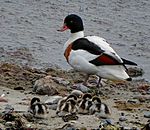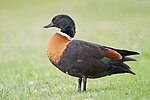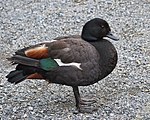Superregnum: Eukaryota
Cladus: Unikonta
Cladus: Opisthokonta
Cladus: Holozoa
Regnum: Animalia
Subregnum: Eumetazoa
Cladus: Bilateria
Cladus: Nephrozoa
Superphylum: Deuterostomia
Phylum: Chordata
Subphylum: Vertebrata
Infraphylum: Gnathostomata
Megaclassis: Osteichthyes
Cladus: Sarcopterygii
Cladus: Rhipidistia
Cladus: Tetrapodomorpha
Cladus: Eotetrapodiformes
Cladus: Elpistostegalia
Superclassis: Tetrapoda
Cladus: Reptiliomorpha
Cladus: Amniota
Classis: Reptilia
Cladus: Eureptilia
Cladus: Romeriida
Subclassis: Diapsida
Cladus: Sauria
Infraclassis: Archosauromorpha
Cladus: Crurotarsi
Divisio: Archosauria
Cladus: Avemetatarsalia
Cladus: Ornithodira
Subtaxon: Dinosauromorpha
Cladus: Dinosauriformes
Cladus: Dracohors
Cladus: Dinosauria
Ordo: Saurischia
Cladus: Eusaurischia
Subordo: Theropoda
Cladus: Neotheropoda
Cladus: Averostra
Cladus: Tetanurae
Cladus: Avetheropoda
Cladus: Coelurosauria
Cladus: Tyrannoraptora
Cladus: Maniraptoromorpha
Cladus: Maniraptoriformes
Cladus: Maniraptora
Cladus: Pennaraptora
Cladus: Paraves
Cladus: Eumaniraptora
Cladus: Avialae
Infraclassis: Aves
Cladus: Euavialae
Cladus: Avebrevicauda
Cladus: Pygostylia
Cladus: Ornithothoraces
Cladus: Ornithuromorpha
Cladus: Carinatae
Parvclassis: Neornithes
Cohors: Neognathae
Cladus: Pangalloanserae
Cladus: Galloanseres
Ordo: Anseriformes
Familia: Anatidae
Subfamilia: Tadorninae
Genus: Tadorna
Species: T. cana – T. ferruginea – T. tadorna – T. tadornoides – T. variegataa – †T. cristata – †T. minor – †T. petrina
Name
Tadorna Boie, 1822
Typus: Anas tadorna Linnaeus, 1758 = Tadorna tadorna
Synonyms
Casarca Bonaparte, 1838 Geogr.Comp.ListBirdsEur.N.Am. p. 56 BHL
References
Primary references
Boie, F. 1822. Tagebuch gehalten auf einer Reise durch Norwegen im Jahre 1817. Schleswig. Reference page. pp. 140, 351.
Vernacular names
беларуская: Пяганкі
български: Ангъчи
dansk: Gravander
Deutsch: Kasarkas
English: Shelducks
Esperanto: Tadornoj
français: Tadornes
한국어: 혹부리오리속
lietuvių: Urvinės antys
Nederlands: Bergeenden
русский: Пеганки
svenska: Gravänder
Kiswahili: Bata-shimo
中文: 麻鸭属
The shelducks, most species of which are found in the genus Tadorna (except for the Radjah shelduck, which is now found in its own monotypic genus Radjah), are a group of large birds in the Tadorninae subfamily of the Anatidae, the biological family that includes the ducks and most duck-like waterfowl such as the geese and swans.
Biology
Shelducks are a group of large, often semi-terrestrial waterfowl, which can be seen as intermediate between geese (Anserinae) and ducks. They are mid-sized (some 50–60 cm) Old World waterfowl. The sexes are colored slightly differently in most species, and all have a characteristic upperwing coloration in flight: the tertiary remiges form a green speculum, the secondaries and primaries are black, and the coverts (forewing) are white. Their diet consists of small shore animals (winkles, crabs etc.) as well as grasses and other plants.
They were originally known as "sheldrakes", which remained the most common name until the late 19th century.[1] The word is still sometimes used to refer to a male shelduck and can also occasionally refer to the canvasback (Aythya valisineria) of North America.[2]
Systematics
The genus Tadorna was introduced by the German zoologist Friedrich Boie in 1822.[3][4] The type species is the common shelduck.[4] The genus name comes from the French name Tadorne for the common shelduck.[5] It may originally derive from Celtic roots meaning "pied waterfowl", essentially the same as the English "shelduck".[6] A group of them is called a "dopping," taken from the Harley Manuscript.[7]
The namesake genus of the Tadorninae, Tadorna is very close to the Egyptian goose and its extinct relatives from the Madagascar region, Alopochen. While the classical shelducks form a group that is obviously monophyletic, the interrelationships of these, the aberrant common and especially Radjah sheducks, and the Egyptian goose were found to be poorly resolved by mtDNA cytochrome b sequence data;[8] this genus may thus be paraphyletic.
Ruddy shelduck (Tadorna ferruginea)
South African shelduck (Tadorna cana)
Australian shelduck (Tadorna tadornoides)
Paradise shelduck (Tadorna variegata)
† Crested shelduck (Tadorna cristata) - possibly extinct (late 20th century?)
Common shelduck (Tadorna tadorna)
The Radjah sheduck, formerly placed in the genus Tadorna, is now placed in its own monotypic genus:
Radjah shelduck (Radjah radjah)
Fossil bones from Dorkovo (Bulgaria) described as Balcanas pliocaenica may actually belong to this genus. They have even been proposed to be referable to the common shelduck, but their Early Pliocene age makes this rather unlikely.
Phylogeny
Based on the Taxonomy in Flux from John Boyd's website.[9]
| Tadornina |
|
Table of species
The following table is based on the HBW and BirdLife International Illustrated Checklist of the Birds of the World.[10][11]
| Image | Scientific name | Common name | Distribution | Conservation status | |
|---|---|---|---|---|---|
| ♂ | ♀ | ||||
 |
 |
T. tadorna | Common shelduck | Europe, Asia, N. Africa | LC IUCN |
 |
 |
T. ferruginea | Ruddy shelduck | Europe, Asia, N. Africa | LC IUCN |
 |
 |
T. cana | South African shelduck | Namibia, Botswana, South Africa | LC IUCN |
 |
 |
T. tadornoides | Australian shelduck | Australia, New Zealand | LC IUCN |
 |
 New Zealand -female-8.jpg" decoding="async" srcset="//upload.wikimedia.org/wikipedia/commons/thumb/9/94/Tadorna_variegata_-near_Kekerengu%2C_South_Island%2C_New_Zealand_-female-8.jpg/225px-Tadorna_variegata_-near_Kekerengu%2C_South_Island%2C_New_Zealand_-female-8.jpg 1.5x, //upload.wikimedia.org/wikipedia/commons/thumb/9/94/Tadorna_variegata_-near_Kekerengu%2C_South_Island%2C_New_Zealand_-female-8.jpg/300px-Tadorna_variegata_-near_Kekerengu%2C_South_Island%2C_New_Zealand_-female-8.jpg 2x" data-file-width="1080" data-file-height="864" height="120" width="150" /> New Zealand -female-8.jpg" decoding="async" srcset="//upload.wikimedia.org/wikipedia/commons/thumb/9/94/Tadorna_variegata_-near_Kekerengu%2C_South_Island%2C_New_Zealand_-female-8.jpg/225px-Tadorna_variegata_-near_Kekerengu%2C_South_Island%2C_New_Zealand_-female-8.jpg 1.5x, //upload.wikimedia.org/wikipedia/commons/thumb/9/94/Tadorna_variegata_-near_Kekerengu%2C_South_Island%2C_New_Zealand_-female-8.jpg/300px-Tadorna_variegata_-near_Kekerengu%2C_South_Island%2C_New_Zealand_-female-8.jpg 2x" data-file-width="1080" data-file-height="864" height="120" width="150" /> |
T. variegata | Paradise shelduck | New Zealand | LC IUCN |
 |
T. cristata | Crested shelduck | Eastern Russia, East Asia | CR IUCN | |
References
Lockwood, W. B. (1984). Oxford Book of British Bird Names. Oxford University Press.
Simpson, J. A. (1989). Oxford English Dictionary. Oxford University Press.
Boie, Friedrich (1822). Tagebuch gehalten auf einer Reise durch Norwegen im Jahre 1817 (in German). Schleswig: Königl Taubstummen - Institut. pp. 140, 351.
Dickinson, E.C.; Remsen, J.V., Jr., eds. (2013). The Howard & Moore Complete Checklist of the Birds of the World. Vol. 1: Non-passerines (4th ed.). Eastbourne, UK: Aves Press. p. 13. ISBN 978-0-9568611-0-8.
Jobling, James A (2010). The Helm Dictionary of Scientific Bird Names. London: Christopher Helm. p. 377. ISBN 978-1-4081-2501-4.
Kear, Janet (2005). Ducks, Geese, and Swans. Oxford University Press. p. 420. ISBN 0-19-861008-4.
Lipton, James (1991). An Exaltation of Larks. Viking. ISBN 978-0-670-30044-0.
Sraml, M.; Christidis, L.; Easteal, S.; Horn, P. & Collet, C. (1996). Molecular Relationships Within Australasian Waterfowl (Anseriformes). Australian Journal of Zoology 44(1): 47-58. doi:10.1071/ZO9960047 (HTML abstract)
Taxonomy in Flux [1] Boyd, John (2007). "Tadornini" (PDF). Retrieved 30 August 2016.
del Hoyo, J. & Collar, N. J. (2014). HBW and BirdLife International Illustrated Checklist of the Birds of the World I: Non-passerines. Lynx Edicions. pp. 134–135. ISBN 978-8496553941.
"HBW and BirdLife Taxonomic Checklist v5". BirdLife International. 2020. Retrieved 21 May 2021.
Retrieved from "http://en.wikipedia.org/"
All text is available under the terms of the GNU Free Documentation License

